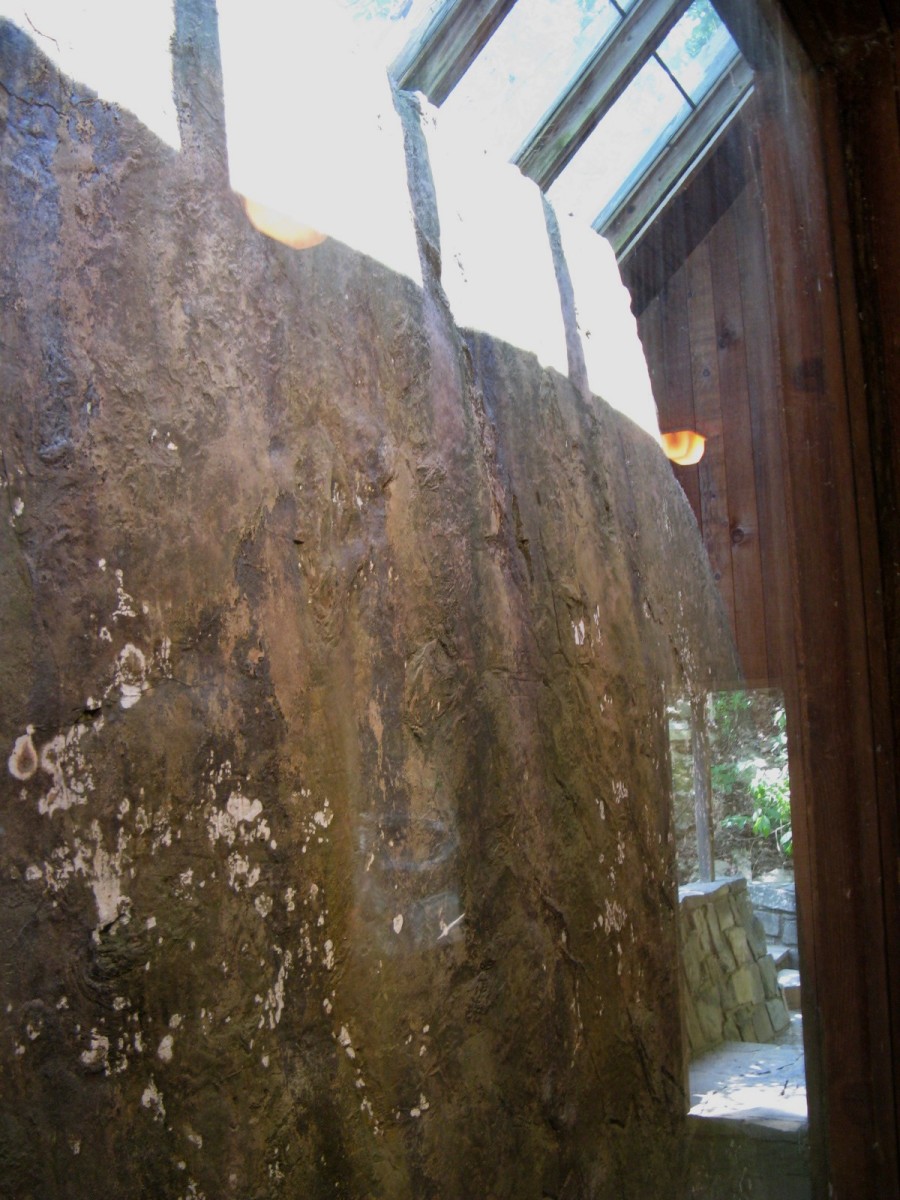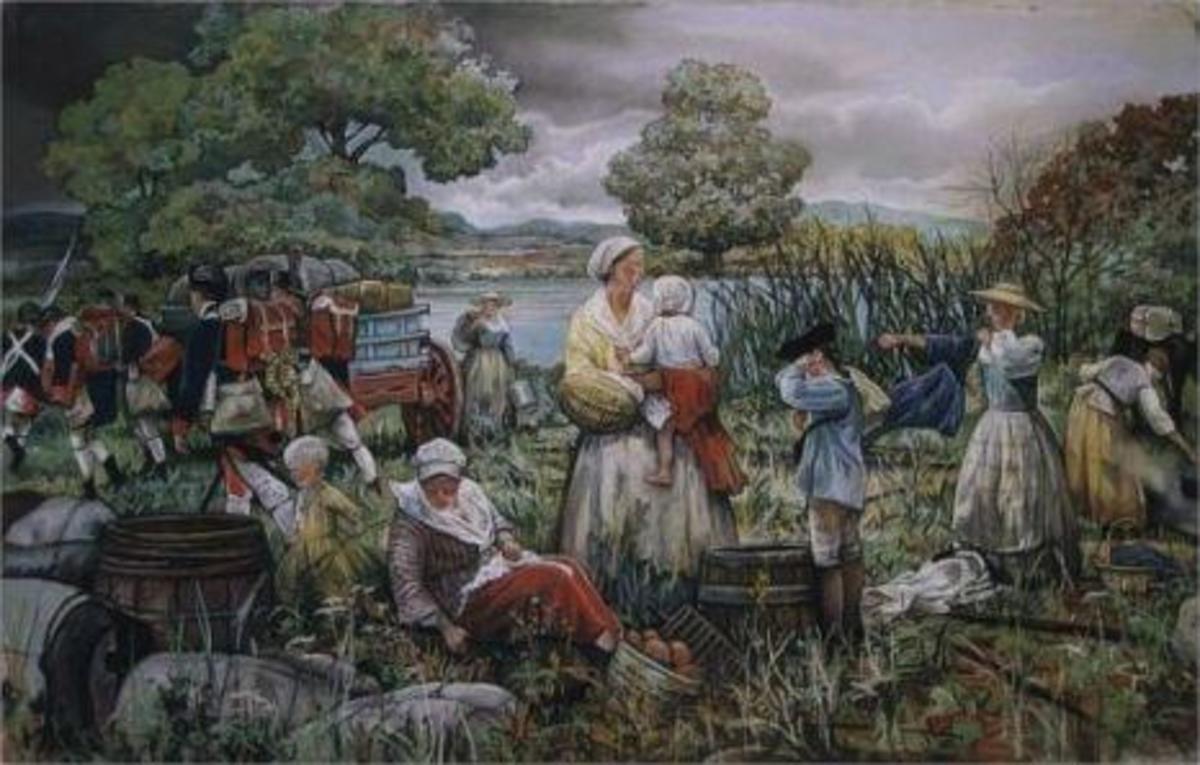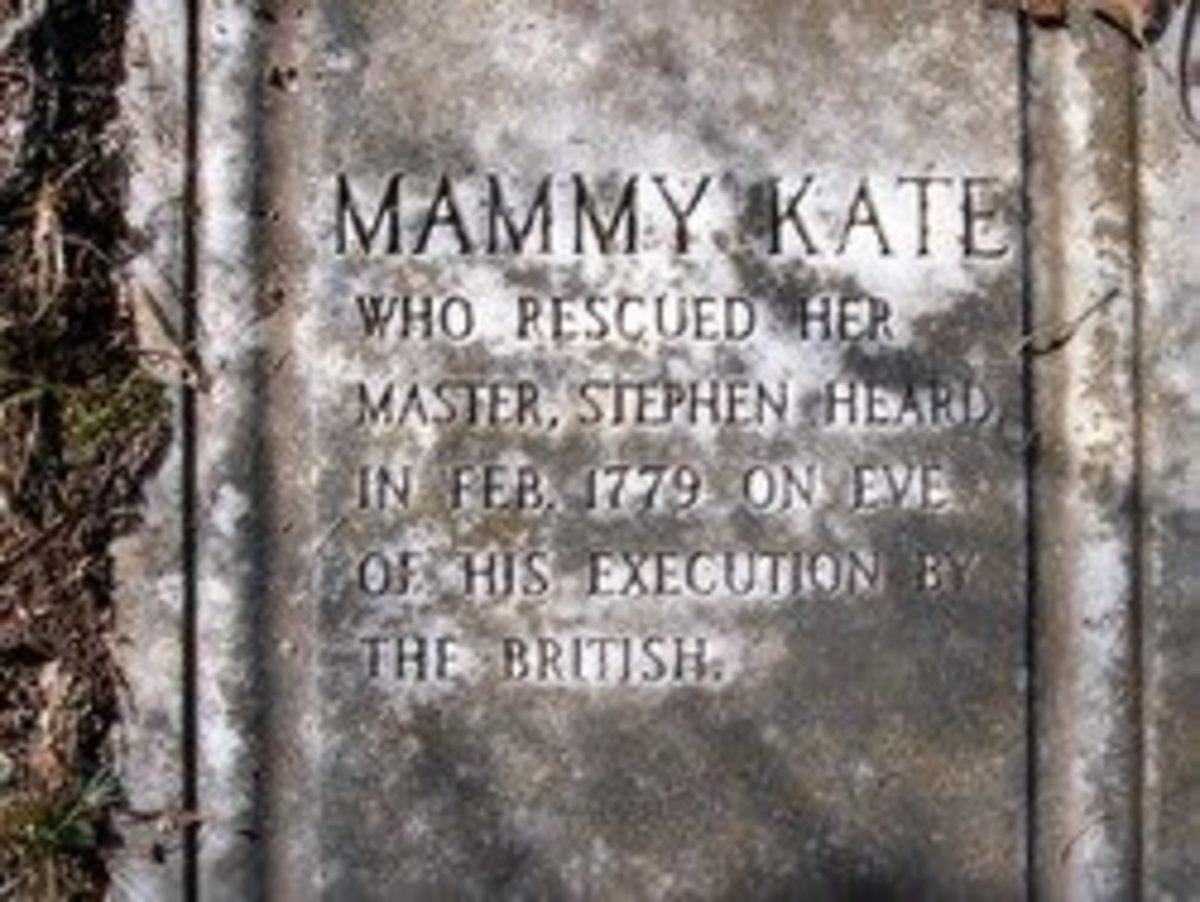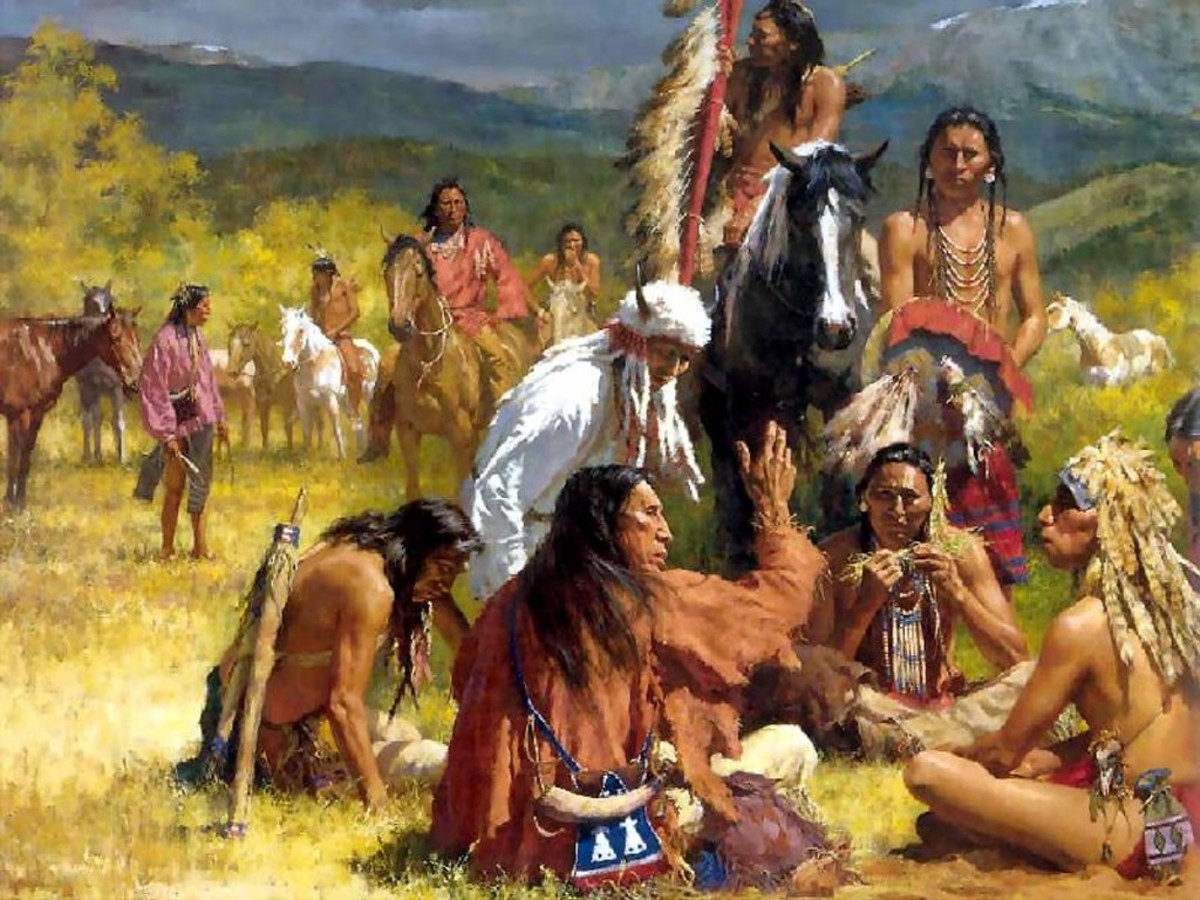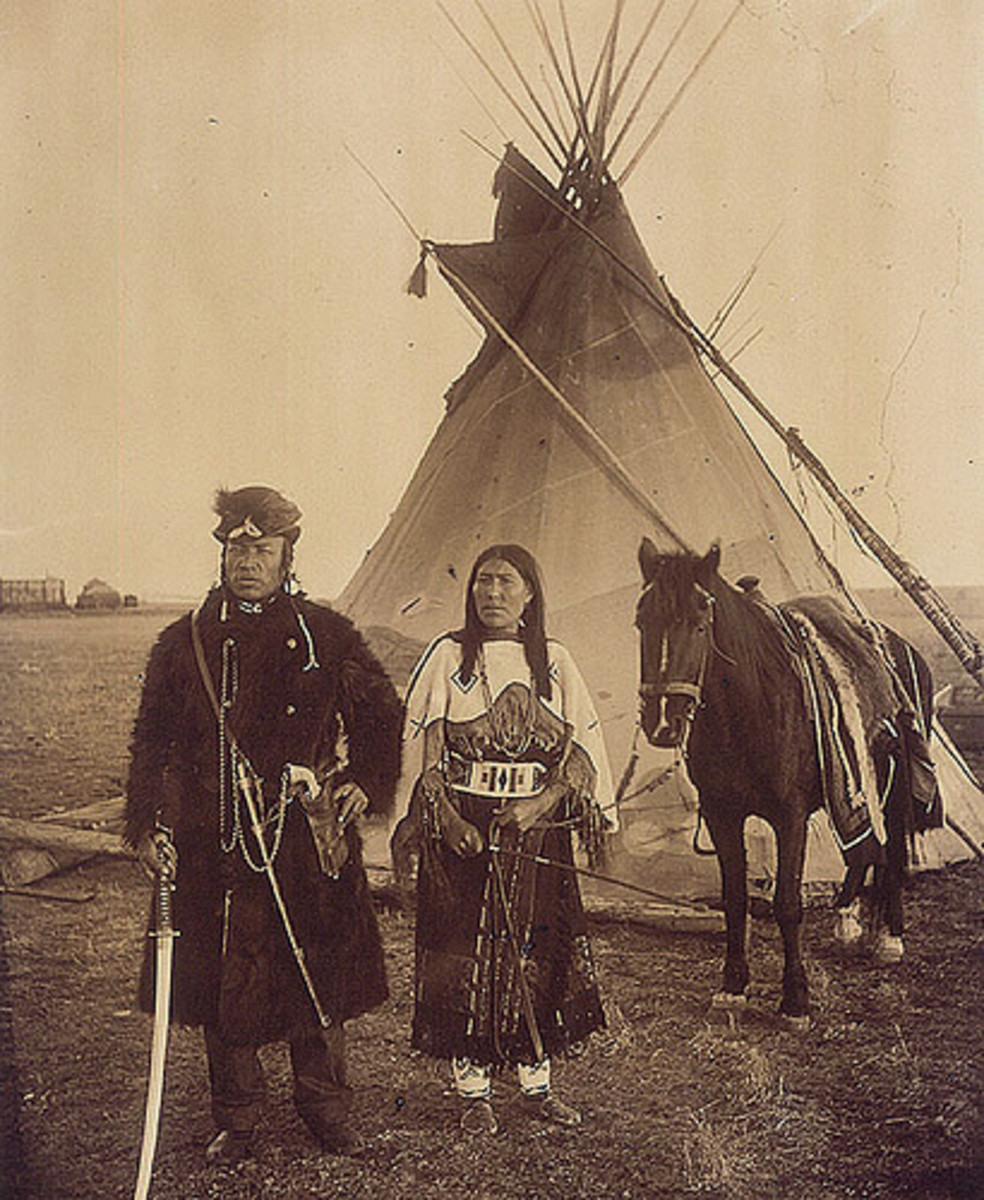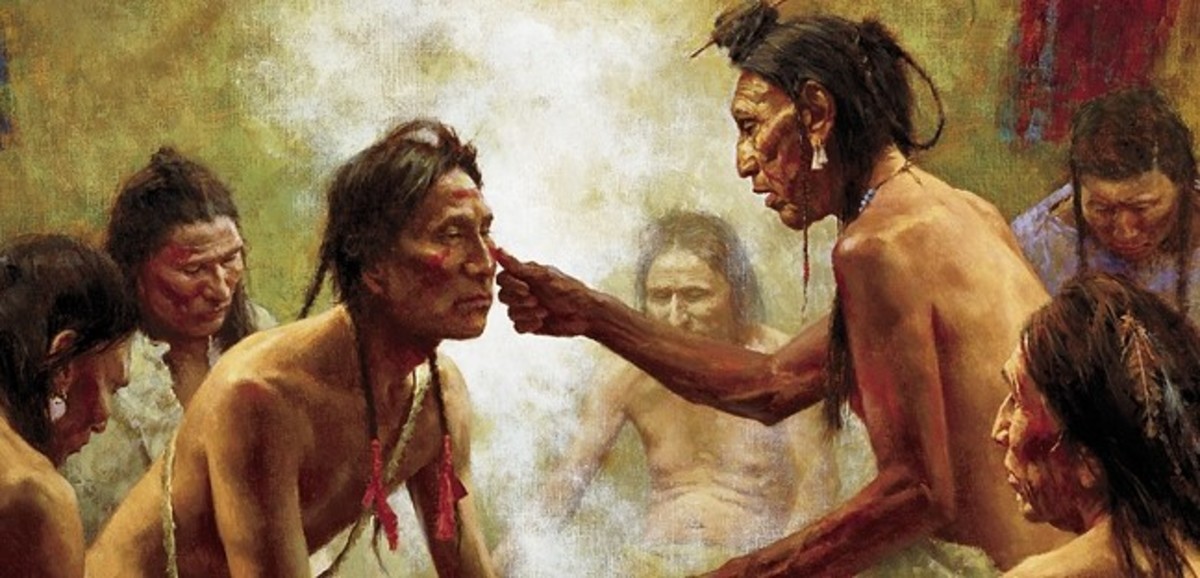- HubPages»
- Education and Science»
- History & Archaeology»
- History of the Americas
US Art and Architecture Essays
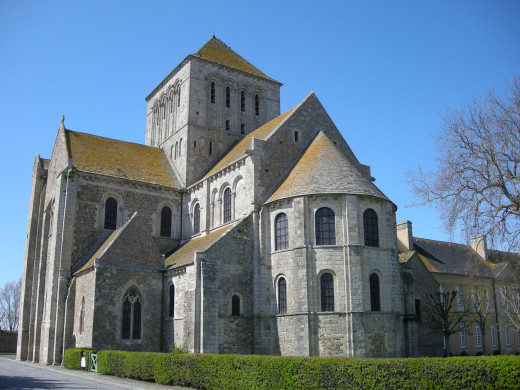
English, Spanish, and French Architecture in America
We have begun to look at what art and architecture can tell us about the mindset of the English, Spanish, French, and Dutch. This time frame covers the colonization of America ranging from when Elisabeth 1 becomes queen in 1558 to when the “treaty ends hostilities between Virginia and Powhatan Confederacy”(Norton 34) in 1646. Today much of America architecture can be traced back to the early colonial settlers.
The mindset of the English settlers was one of colonization. The English architecture in America is shown as being primarily houses. When arriving in America the English settlers at first copied the Algonkian’s wigwams, which were made from the materials provided in the forest. The houses were simple temporary dwellings and the English settlers soon created their own style of houses known as New England style dwellings; these houses were simple rectangular houses. The English eventually reached what we call the saltbox house; it was the most popular model and was so named because it was shaped like the boxes that salt came in. It was the most popular model because it was the most practical at that time; its roof was always sloped on the side that faced the weather so that snow and rain could easily slide off.
The Spanish architecture in America was quite different than that of the English settler’s. Instead of concentrating on colonizing America like the English settlers the Spanish were more concerned with building missions in order to convert the Indians to Christianity. Most of the Spanish buildings in America were built to be true to the "original" buildings back in Spain. The most popular Spanish style was usually baroque, a style which exaggerates motion. The Spanish baroque style is much different from New England style dwellings in that it is designed to be more visually impressive then practical. The mission, San Xavier del Bac, was built in 1783 and is located in Arizona. Mission San Antonio de Valero, also known as the famous Alamo and San Luis Obispo, are two other well-known missions created by the Spanish in the US.
Spanish art also shows the Spaniards religious intent in America, showing Christian saints and Biblical scenes. Most of the art also has an "Indian" type look; most of it which was made by newly converted Christian Indian artists. The art made in America differed from the traditional Spanish art as it was made primarily by Indians who had never been to Spain. Their idea of art was slightly different from the Spanish. Two well-known works are the La Virgen del Carmen and the Nuestra Señora de Guadalupe. The La Virgen del Carmen was done by Pedro Antonio Fresquís in the late 1700s; I believe it is meant to be of Virgin Mary and baby Christ. The Nuestra Señora de Guadalupe was done in the early 1800s, by a New Mexico church. The Nuestra Señora de Guadalupe shows Virgin Mary’s image imprinted on Juan Diego’ cloak.
The Dutch “aimed primarily at trade rather than colonization” (Norton 39). The Dutch colony was confined to a river valley that offered easy access to settlements. Their main contribution to American architecture consisted of the gambrel roof. This type of roof has two sharp angles instead of a straight line like most other styles. The gambrel roof is designed so that it takes up as little space as possible from the interior of the dwelling. This would have provided the Dutch with extra storage room for their wares, such as animal furs. The Dutch settlers in America did not have much interest in art, but they did make useful items like the beer tankard (c1700) and certain furniture like the kast cupboard. The Dutch focused on creating items that were easily tradable, unlike the English who were more interested in colonization than trade with other nations.
The French mindset was mainly on agriculture in America. Most French architecture is in New Orleans, which was suited to the French countryside styles. The French would typically build farmhouses right up to the street, leaving no room for a yard or porch. This would maximize the amount of space behind the farmhouse for crop fields for the French settlers.
The English settlers made practical dwellings that aligned with their colonizing mindset. The Spanish focused on converting the Indians to Christianity. In line with this they built missions, churches, and made religious art work. The Dutch, who were mainly interested in trade opportunities, created useful items that could be traded like furniture and beer tankards. The French came to America for agricultural reasons. They resided toryin New Orleans and designed their settlement to maximize their crop field area. The English, Spanish, Dutch, and French settlers all came to America for one reason, opportunity!
Works Cited
"1600-1830:Â Baroque." About.com Architecture. About, n.d. Web. 30 Sept. 2012. <http://architecture.about.com/od/periodsstyles/ig/Historic-Styles/Baroque.htm>.
Achebe, Chinua. Things Fall Apart. New York: Anchor, 1994. Print.
Adichie, Chimamanda Ngozi. Purple Hibiscus: A Novel. Chapel Hill: Algonquin of Chapel Hill, 2003. Print.
"Baroque." Wikipedia. Wikimedia Foundation, 29 Sept. 2012. Web. 30 Sept. 2012. <http://en.wikipedia.org/wiki/Baroque>.
"La Virgen Del Carmen - Teitipac, Mexico." La Virgen Del Carmen - Teitipac, Mexico. N.p., n.d. Web. 30 Sept. 2012. <http://www.aug.edu/augusta/iconography/oaxaca/teitipac/carmenTeitipac.html>.
"Our Lady of Guadalupe." Wikipedia. Wikimedia Foundation, 27 Sept. 2012. Web. 30 Sept. 2012. <http://en.wikipedia.org/wiki/Our_Lady_of_Guadalupe>.
Woods, Maribeth. "Theories about How Society Influences Behavior." Helium. Helium, 21 Dec. 2007. Web. 25 Sept. 2012. <http://www.helium.com/items/757615-theories-about-how-society-influences-behavior>.
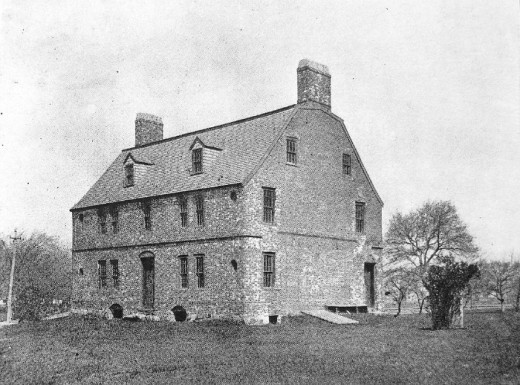
Attitudes and Priorities of the Early English Settlers
In US History we have learned that the architectural designs of buildings can describe the priorities, beliefs, and attitudes during a time period. We are currently focusing on the type of attitudes and priorities that the English settlers brought and discarded when they came to America. When the English settlers first came to America, they had a variety of attitudes and priorities that can be seen in their architecture.
The English settlers that settled in the New England area were mainly puritans who came to America because they disapproved of many things in English culture. The puritans brought with them their belief in simplicity and modesty; their houses and churches reflect their beliefs. The Plymouth Plantation is a good example of how the puritan’s priorities show in their architecture. Plymouth Plantation was built modestly using split logs, reeds, and rushes that were gathered along the shore.
As time went on the Puritans learned to adapt to America; they learned “that wooden shingles were easier and more protective against the harsh climate, and more fireproof”. The puritans had to discard their thatched roofs and wooden chimneys to be able to survive in America. The puritans first used wax paper for windows to avoid the expense of importing glass and then small diamond-shaped glass panes that were cheaper to replace. The puritans lived modestly not wanting, or needing, the expense of full glass panes, when there were cheaper and more efficient options.
After 1660 families had settled in with different priorities. Many families did not want to live simply and modestly as the puritans did. The English families’ priorities were their families, status, and profit. Thus the new houses, churches, and buildings became more stylish. The new houses were designed with family in mind; a popular style called end-chimney was designed to have a loft area for multiple people to sleep in to allow for larger family sizes. One example of families wanting to show status was the Howland family, who moved from their small house and thatched roof with a wooden chimney, to a much larger one with wooden shingles and a brick chimney.
As families began to make more of a profit, they began to use more expensive materials like glass. Families no longer wanted to live in older houses like the Whipple House, which was built around 1640 without glass windows. They wanted to live in houses like the “Parson Capen house that was built in 1683 and had square glass panes in the windows and some decorative touches like the finial”. Many of the newer settlers discarded the puritan’s like for modesty and simplicity.
Overall, the design of the architecture in colonial America was influence by the priorities and attitudes of the English settlers that were adapting to America. The puritan dwellings reflected their religion, their belief in modesty and simplicity. The architecture of the English families that came to America reflected their priorities; their want for a place to raise a family and show off improved status.
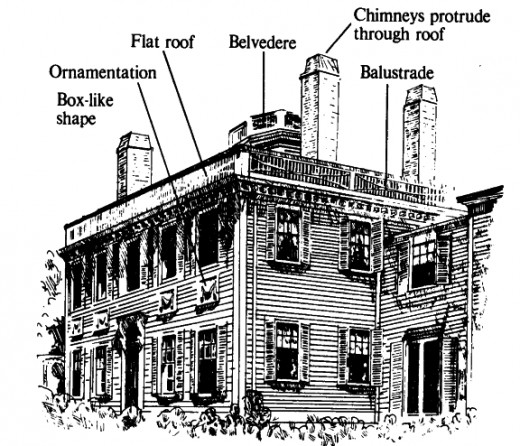
American Patriotism in Art and Architecture After the Revolutionary War
In US History we have learned that the ideals, feelings, and mindset of a people are often reflected in their art and architecture. As a class we are focusing on the period after the Revolutionary War. “The United States was seen by many as a great and innovative experiment in democracy”; because of this everything needed to be different, especially the art and architecture.
After the Revolution no American wanted other countries to be able to compare them to any European nation. The United States went out of its way to distance itself from Britain. For instance, America did away with certain artistic styles, like Georgian, as they were “were too British”. America developed dissimilar styles that they considered more American in nature.
One such style was the Federal style; which was actually more of an adaption “of an English style called Adam after the architect brothers who popularized it there”. The Federal style was quite unlike the Georgian British style. Georgian style buildings had a hip roof that sloped downwards to the walls and were known for having an oval or round parlor. The new Federal style buildings were the opposite; they were symmetrical and avoided most type of curves and arcs. The Massachusetts state capitol, Heard House, in Danvers, and the Pierce-Nichols House, in Salem, are all good examples of the Federal style. The Heard House in Danvers is the best model of a Federal style house. It has a portico, a non-hip roof, and the small fanlight also known as a semicircular window on its second floor. The Federal style shows that America’s architecture was just as different as their political stance, if not more so, from Great Britain.
The other American style is the neo-classical style which was America’s attempt to surpass the Palladian style and create a more “genuinely Greek and Roman-looking style”. America chose to use Greek and Roman style architecture to show the world that they were creating a democracy similar to that of the Greeks and Romans. Jefferson used a Roman temple that is today called Maison Carrée as his inspiration in creating the Virginia state capitol in Richmond, and Rotunda at the new University of Virginia. The US Capitol dome models Roman style with its “close-set columns, oval "bull's eye" windows, and a rather melodramatic statue on top”. The statue on top of the US Capitol dome is an Indian woman that represents America’s new found freedom from Britain. The neo-classical style showcases America’s desire for freedom and democracy.
During the period after the Revolutionary War America’s art is extremely patriotic. America’s new ideals were reflected in that they created many art items of Revolutionary Heroes. The most popular art time of the time was George Washington memorabilia. An artist by the name of Gilbert Stuart built his whole career on portraits of the first United States President. One of his most famous portrait features George Washington in a Roman-senator-like pose. This particular portrait includes the eagles, the flag, and books; this helps emphasizes many American ideals. The books symbolize knowledge or education, the eagle represents America’s freedom, and the flag shows America’s independence. Other popular portraits included Alexander Rose, A. Laurason, and David Boudon. All of the famous portraits have one thing in common - they were all American patriots.
The art and architecture after the revolutionary war is all about American patriotism. After the war America wanted to be seen as its own country that was in no way connected nor dependent on Britain. To demonstrate this, American artists focused on making Revolutionary war heroes’ memorabilia. The American architects created buildings that were inspired by older democracies like Greece and Rome. America used its art and architecture to prove to the world that they were a free democracy.
Works Cited
"1690s - 1830: Georgian Colonial House Style." About.com Architecture. About, 2005. Web. 23 Oct. 2012. <http://architecture.about.com/od/periodsstyles/ig/House-Styles/Georgian.htm>.
Edgar, J. M. "Colonial Styles: Georgian and Federal Architecture | Homeowner Guide | StarCraft Custom Builders: Design/Build Kitchens, Baths, Additions & Home Remodeling in Lincoln, Nebraska." Colonial Styles: Georgian and Federal Architecture | Homeowner Guide | StarCraft Custom Builders: Design/Build Kitchens, Baths, Additions & Home Remodeling in Lincoln, Nebraska. Star Craft, n.d. Web. 23 Oct. 2012. <http://starcraftcustombuilders.com/Architectural.Styles.Colonial.htm>.
"Federal Architecture." Wikipedia. Wikimedia Foundation, 22 Oct. 2012. Web. 23 Oct. 2012. <http://en.wikipedia.org/wiki/Federal_architecture>.
"Georgian Architecture." Wikipedia. Wikimedia Foundation, 22 Oct. 2012. Web. 23 Oct. 2012. <http://en.wikipedia.org/wiki/Georgian_architecture>.
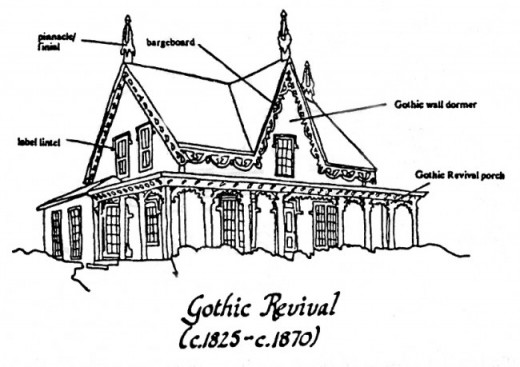
Greek and Gothic Revival before the Revolutionary War
In US History we have learned that the architectural designs of buildings can describe the priorities, beliefs, and attitudes during a time period. In the period leading up to the civil war two different architectural styles began to develop. The American people began to stray from the neo-classical style and instead embraced the Greek and Gothic revival styles.
The Greek revival style is similar to the neo-classical style that was popular after the revolution in that they both incorporate ancient Greek styles. The difference is that the neo-classical architecture combined Greek and Roman styles, whereas the Greek revival “is an attempt to imitate faithfully ancient Greek styles.” The Greek revival style became popular because it represented the values democracy, freedom, and serious purpose to the Americans that had won their freedom from Britain. This style was primarily used in large public buildings resembling the old Montgomery County Courthouse in Ohio, Virginia State House, and the Quincy Market in Boston.
The Gothic revival style “comes out of a whole different mindset from Greek Revival.” The Gothic style is the American attempt to create a highly romanticized and imaginative version of the Gothic style. The Gothic revival style uses Gothic features to appeal to feelings and emotions instead of logic or reason. Gothic revival style buildings are made from dark materials in order to make the buildings, primarily churches, appear scary and mysterious. Gothic revival style architecture is demonstrated in structures like the Trinity Church in New York, St Patrick's Cathedral in Manhattan, the Brooklyn Bridge, and the Smithsonian Institution.
Both styles are made in such a way to make people respect both power and authority. The difference is the Greek revival makes Americans respect them because they bring order, freedom and common sense. On the other hand the Gothic Revival makes Americans “respect power and authority because they are awesome, a little frightening, and derived from faith rather than reason”. I feel that Americans were able to believe in these two world-views at the same time because they were, in essence, the same. Both caused people to respect power and authority, except they chose different methods. One relied on logic and reason and the other on feelings and emotions. The outcome, however, was the same.

